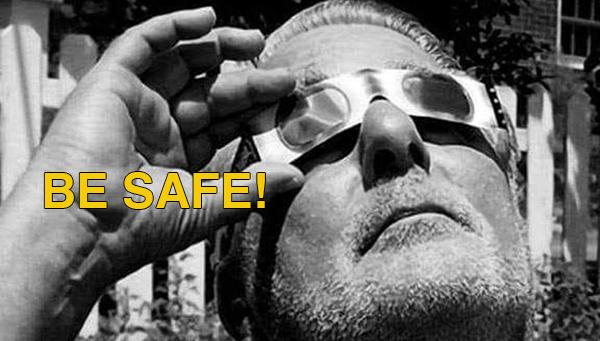Don't Damage Your Eyes During the Upcoming Eclipse

The April 8 total solar eclipse is just around the corner and many people across the U.S., Canada, and Mexico are excited about this spectacular event. Here's an extremely important warning worthy of careful consideration—whether you plan to photograph the eclipse or just marvel at the celestial beauty with your eyes.
Here the problem in a nutshell: According to experts at the American Astronomical Society (AAS), the market is "polluted" with so-called "eclipse glass" that are either totally fake or don't offer the necessary protection. A total eclipse happens as the moon passes between Earth and the Sun for a few moments when the sun is totally blocked from our view.
The only time it's safe to view a total eclipse without protective eyewear is during this brief period of totality. At first it can be difficult to distinguish between counterfeit solar viewers and the real thing. The confusion is compounded by the fact that most fake glasses are manufactured by just a few Chinese companies, before being rebranded with different logos.
Worse yet, according to experts at AAS "There's no way to tell by just by looking at them whether eclipse glasses are genuinely safe." But there's an easy trick if you didn't purchase glasses from a respected, certified source: If you put them on indoors, nothing should be visible except for extremely bright lights.

Then, if the glasses pass this initial test, put them on outdoors and look around. AAS data reveals that you still shouldn't see anything through the specs, except perhaps the Sun's reflection on a shiny surface or puddle—and these should appear very faint. Even if they pass this second critical test, be sure not to look directly at the Sun for no more than two or three seconds every five minutes or so.
The ASS Solar Eclipse Task Force has puplished this list of solar viewers marketed by accredited labs that rigorously tests the products they sell. And don't be fooled by unapproved glasses that are sold with the appropriate "ISO 12312-2 standard" nomenclature. That's because "anyone can make such a statement, but that doesn't make it true."
We recommend you read the entire AAS statement that can be accessed through their link provided above. So have a very enjoyable and safe April. We hope your photographs look spectacular!
And just in case you need a bit of help, check out the tutorial we posted last year, explaining how to photograph the October 14 Annular Solar Eclipse that transfixed many of us across the nation. Of course, the maps and timing of that event differ from what will happen next week.
- Log in or register to post comments














































